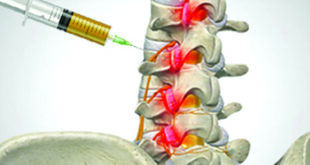By: SAMUEL P. MARTIN, MD, FACS Founder and Medical Director at Vascular Vein Centers
 March is National DVT Awareness Month! DVT stands for Deep Vein Thrombosis. This a clot in a deep vein that can obstruct blood flow in the vein.
March is National DVT Awareness Month! DVT stands for Deep Vein Thrombosis. This a clot in a deep vein that can obstruct blood flow in the vein.
What is it about DVT that is so significant that national recognition is focused on it for one month? DVT is referred to as the “silent killer” and is the single largest cause of mortality in hospitals in patients with another admitting diagnosis. This is because a clot in the leg or pelvic, usually occurring after an abdominal, pelvis or orthopedic operation, trauma or stroke, breaks off and passes through the heart to block the flow of blood to the lungs (pulmonary embolus- PE) causing shortness of breath and/or chest pain and can cause death if the clot is large enough.
As many as 900,000 people could be affected by DVT (1 to 2 per 1,000) each year in the United States.
Up to 100,000 Americans will die as a result of a DVT with a pulmonary embolus. Two thirds of these people die in the hospital or within a few weeks of hospitalization.
Half the people who develop a DVT will have long-term consequences such as swelling, pain, discoloration and skin changes around the ankle of the affected leg.
One-third of those with a DVT will have a recurrence within 10 years.
Clots in the legs occur for a variety of reasons. Some people inherit a tendency to clot, referred to as thrombophilia.
Cancer, obesity, pregnancy, prolonged travel and sedentary lifestyle also present significant risks for DVT.
The clot can be completely asymptomatic (“silent”) in the affected vein, or it can cause:
- Sudden leg swelling
- Pain, aching or fullness & pressure in the leg
- Warmth or coolness of the leg in the area of discomfort
- Skin discoloration of the lower leg
Consult your physician immediately if you have any of the symptoms or physical signs listed above.
What Causes a DVT?
There is a greater risk for a clot with operations or on long trips. Risk of clot is significant with patients who have orthopedic operations — back, hip, knee and in abdominal or pelvic procedures or trauma cases. Prevention involves early mobilization, pneumatic compression of the legs while in the operating room and afterward, and use of anticoagulants, especially in those with a previous history of clots or a family history of clots and in patients with cancer. Long trips with little movement, especially with constricting garments or dehydration, increases the risk of developing clots. Compression stockings, hydration and frequent movement or flexing the foot can help a great deal. This is especially important in overweight or obese people and in women who are pregnant because of a higher risk for clots.
Risk can be reduced by:
- Maintaining a good body weight
- Staying active and exercising regularly
- Avoid smoking
- Knowing your potential risk factors and discussing them with your health care provider
In discussing clots in the legs, we must be mindful that there are two systems of veins in the legs – a deep system and a superficial system. The deep system is surrounded by muscles and carries most of the blood out of the legs. It is at the greatest risk for complications from clots. We can’t see or feel these veins. A clot could be “silent” with no pain or swelling or it could cause dull, heavy, pressure, pain and swelling.
Clots in superficial veins, outside of the muscle tissue, can cause a lump or cord which is tender to touch, painful especially when standing and sometimes has a pink color in the overlying skin. If there is pink discoloration of the skin, it is not infection. While these clots may be painful, they don’t lead to dangerous consequences and aren’t a cause for panic. Nevertheless, an appointment should be made with a physician, particularly a vascular specialist, and a Doppler ultrasound test should be performed.
Treatment of DVT
Clots in the deep veins require medical therapy. Your provider may prescribe an anticoagulant or blood thinner such as Heparin, Coumadin or one of the new anticoagulants like Xarelto, Eliquis or Pradaxa. You should try to stay active, wear compression stockings and elevate your legs when sitting.
Resolve to get up, get out, keep moving and wear your compression for healthy, beautiful legs and decrease your chances of developing clots.
Vascular Vein Centers of Davenport / Haines City
121 Webb Dr Suite 300, Davenport, FL 33837
(863) 291-6313
www.PolkVVC.com
next to IMA Pichardo Clinic
 Central Florida Health and Wellness Magazine Health and Wellness Articles of the Villages
Central Florida Health and Wellness Magazine Health and Wellness Articles of the Villages



